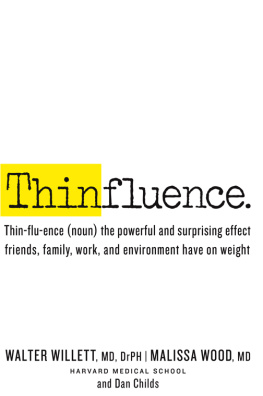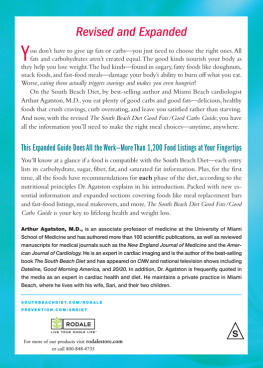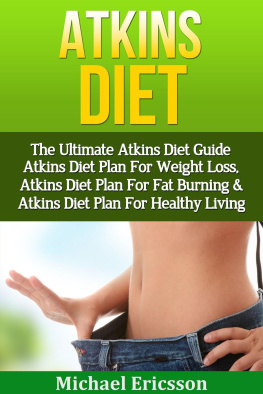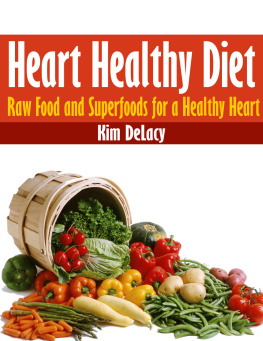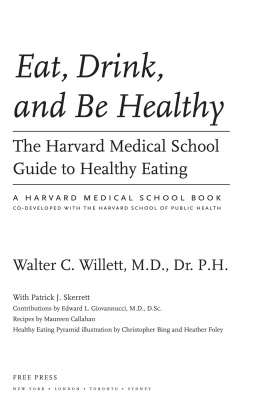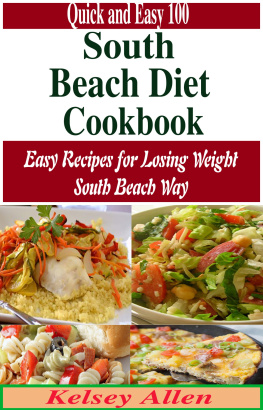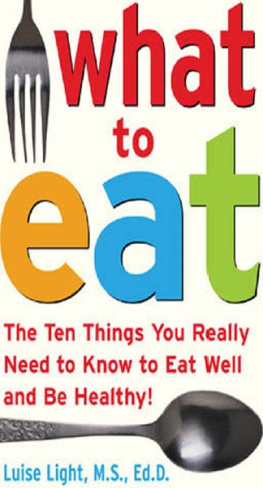Medical and nutrition experts weigh in on the groundbreaking eating plan based on Harvard Medical School research
Eat, Drink, and Be Healthy
by Walter C. Willett, MD, DrPH
Dr. Willett describes a way to eat that is both delicious and healthy. Many nutritional scientists will strongly dispute Dr. Willetts contention that our national symbol of healthy eating, the USDA Food Pyramid, is unhealthy. However, very few will deny that the prescription in this book is a good one.
Susan Roberts, Ph.D., senior scientist, Energy Metabolism Laboratory, USDA Human Nutrition Research Center at Tufts University
Finally we can step away from the hype and confusion of fad diets and turn instead to a solidly researched guide we know we can trust. I am grateful to Dr. Willett and his associates for making this information so clear and accessible. Throw away your other volumes; this is all you will need.
Mollie Katzen, author of The Moosewood Cookbook
Willett has studied real women (not rats) over many years in the Nurses Health Study and distilled it into a readable guide for healthy living. This is the book on nutrition every woman should read.
Susan Love, M.D., author of Dr. Susan Loves Breast Book and Dr. Susan Loves Hormone Book
Eat, Drink, and Be Healthy is a welcome beacon of clarity among the fog of misleading claims that make up the vast majority of diet books on the market. Dr. Willetts recommendations for healthy eating are based on a sound interpretation of current scientific knowledge, flavored by a joyful appreciation of traditional foodways. Unlike most diet books, he does not emphasize manipulation of one isolated physiological mechanism as a cure-all. Rather, he applies a commonsense interpretation of wide-ranging scientific studies on diet and health. In the process, he challenges widely accepted but poorly supported ideas about nutrition and health, whether they come from the popular press or from federal government committees. The ultimate winners are the readers of this book, who will come away with the tools, guidance, and rationale they need to explore new ways of eating that are delicious, health-promoting, and based on the best of science and tradition.
Lawrence H. Kushi, Sc.D., Associate Director for Etiology and Prevention, Kaiser Permanente
CRITICS NATIONWIDE APPLAUD THIS PIONEERING GUIDE
This excellent and controversial book offers a modified food pyramid thats heavy on fruits, vegetables, and monosaturated oils and nuts.... [Dr. Willett] is a heavy hitter in the world of nutrition, so expect his book to exert influence beyond your bookshelf.
Detroit Free Press
[A] standout health book.... Particularly insightful is Willetts revised version of the U.S. Food Guide Pyramid.
Chicago Tribune
Eat, Drink, and Be Healthy wins with easy-to-digest research information and lots of tempting recipes.
Copley News Service
Toss out your old diet books, forget the governments famous but flawed food pyramid, and get your hands on Eat, Drink, and Be Healthy , by Walter Willett.
The Boston Globe
[Willetts] new theory threatens to upend the governments food pyramid, [which he says] is outdated and doesnt reflect the latest food research.... Willetts criticism may prompt many people to view it more skeptically because of his clout in the nutrition field.
USA Today
Thank you for downloading this Simon & Schuster ebook.
Get a FREE ebook when you join our mailing list. Plus, get updates on new releases, deals, recommended reads, and more from Simon & Schuster. Click below to sign up and see terms and conditions.
CLICK HERE TO SIGN UP
Already a subscriber? Provide your email again so we can register this ebook and send you more of what you like to read. You will continue to receive exclusive offers in your inbox.
To Gail
Acknowledgments
T HE CONCEPTS IN THIS BOOK owe much to the work and ideas of many predecessors, present colleagues, postdoctoral fellows, and doctoral students. In particular, I am grateful for the encouragement, support, and thoughts of my colleagues Ed Giovannucci, Meir Stampfer, Graham Colditz, Bernard Rosner, Laura Sampson, JoAnn Manson, Frank Sacks, David Hunter, Charles Hennekens, Sue Hankinson, Eric Rimm, Frank Hu, and Alberto Aschiero of the Channing Laboratory and Harvard School of Public Health. Frank Speizer provided strong support over many years for the study of diet and disease within the Nurses Health Study.
The vast majority of the research described in this book, by our own group and by others, would not have been possible without the funding of research grants through the National Institutes of Health. My colleagues and I are most appreciative of the strong public support for health-related research in the United States, and hopefully the information contained in this book will be deemed worthy of this investment.
Many helpful comments were received from Drs. Meir Stampfer, Susan Roberts, Frank Sacks, Eric Rimm, Peter Glausser, and Mollie Katzen, who reviewed all or specific chapters of this book. Dr. Tony Komaroff and Edward Coburn of Harvard Medical School provided important support and encouragement in the initial development of this book, and Liz Lenart and Debbie Flynn assisted in many aspects of the production. I also want to thank Simon & Schuster and Bill Rosen in particular for their vision of creating a series of high-quality books about health from Harvard Medical School.
At home, my wife, Gail, assisted in many experiments in new ways of eating. Our sons Amani, who managed to trade the apples in his lunch for Twinkies at day care, and Kamali, who showed me that a vegetarian diet could mean Coca-Cola, ice cream, and pizza, helped me stay in touch with reality.
CHAPTER ONE
Healthy Eating Matters
YOU EAT TO LIVE.
Its a simple, obvious truth. You need food for the basics of everyday lifeto pump blood, move muscles, think thoughts. But what you eat and drink can also help you live well and live longer. By making the right choices, you can avoid some of the things we think of as inevitable penalties of getting older. Eating wellteamed with keeping your adulthood and old age.
When it comes to diet, knowing whats good and whats bad isnt always easy. The food industry spends billions of dollars a year to influence your choices, mostly in the wrong direction. Diet gurus promote the latest fads, most of which are less than healthy, while the media serves up near daily helpings of flip-flopping nutrition news. Supermarkets and fast-food restaurants also offer conflicting advice, as do cereal boxes and thousands of websites, blogs, Facebook pages, and tweets. The federal government, through its Food Guide Pyramid, MyPyramid, and MyPlate images, aimed to cut through the confusion but ended up giving misleading and often unhealthy recommendations (see chapter two) that benefit American agriculture and food companies more than Americans health.
While the average American diet still has a long way to go before it can be called healthy, it has improved over the past decade or so in spite of the babel of nutrition information. Several of my colleagues and I looked at the diets of almost 34,000 Americans who took part in the National Health and Nutrition Examination Survey between 1999 and 2012. This survey, conducted every year, gauges diet still wasnt very healthyrating 48 points out of 110and that poorer individuals and those with less education have poorer diets than wealthier and better-educated individuals. And this gap looks like it is increasing over time.
Yet, these modest improvements in diet quality had an astounding impact on the health of the nation. Between 1999 and 2012, we estimated that these changes prevented 1.1 million premature deaths from heart attacks, strokes, cancer, and other causes, and 3 million cases of type 2 diabetes. But theres more work to be done, since the average American diet in this study wasnt that great. The eating strategies described in this book will help you make a great diet and reap not only the benefits described in this study but many more as well.
Next page

